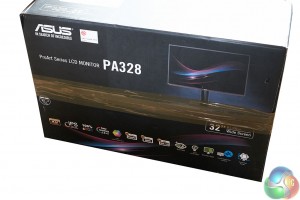
The Asus PA328Q ships in a large full colour box with a high resolution image of the monitor on the front. The box weighs almost 16kg. Box dimensions are 847x552x350mm (WxHxD).
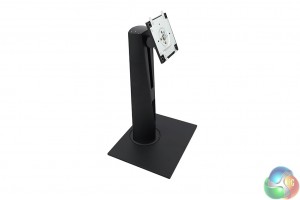
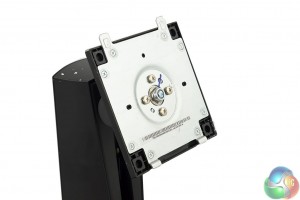
Inside the box, a large stand is supplied, pre assembled. This stand clips into the back of the panel itself. The stand itself is very sturdy, reassuringly heavy and ensures the panel is held in place without suffering from nasty wobbles.
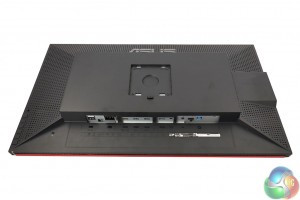
The stand attaches to the panel without the need for tools. Without the stand, the PA328Q measures 734x431x67mm (WxHxD).
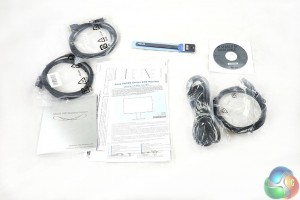
Inside the box (alongside literature and a calibration chart):
- Mini-DisplayPort-to-DisplayPort cable.
- Power cord.
- USB 3.0 cable.
- HDMI cable.
- MHL cable (Optional).
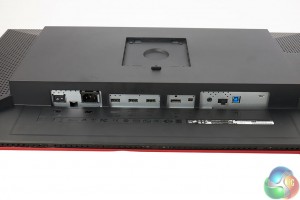
On the back of the panel is a power button and connector. Alongside are three HDMI ports, one of which is MHL 3.0 capable. A Mini DisplayPort (1.2) and DisplayPort (1.2) are next in line, alongside a headphone jack and USB header for connection to the hub. The MHL 3.0 input can handle a 30hz 4k signal from a compatible smartphone or tablet.
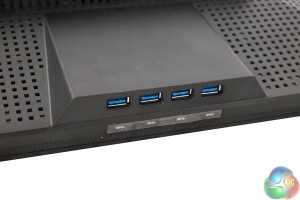
Asus have included four handy USB 3.0 ports on the side of the panel. If the PC is on the ground out of the way, this could be very useful indeed.
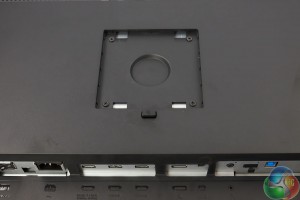
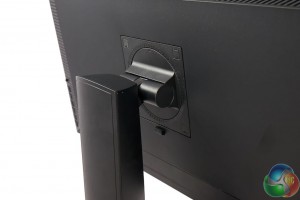
The stand is mounted to the panel by simply pushing the mounting section into the retainer mount. To disconnect the panel, simply push a button at the bottom. When assembled, the PA328Q weighs 11.7KG.
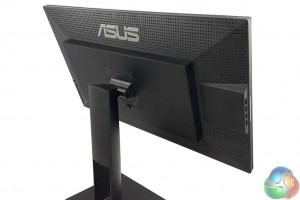
The Asus PA328Q ProArt 4K has support for swivel, pivot and tilt (+20°~-5°). Height adjustment (130mm range) is offered also.
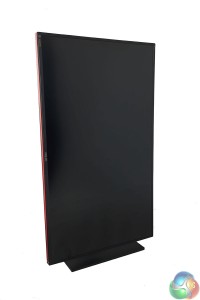
The ASUS PA328Q can be easily rotated into portrait mode without the need for any tools. We can't see too many people using a 4K screen in portrait mode all the time – however if you were lucky enough to have two of these attached to a PC, one could be left in portrait mode for website, Facebook and forum browsing. The first monitor could then be used in standard landscape mode for gaming.
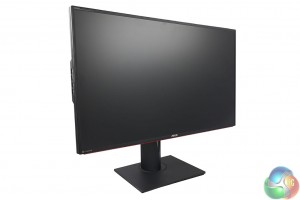
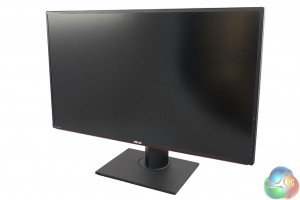
We like the look of the Asus PA328Q. The panel almost reaches the very edge of the front, leaving a very thin bezel surrounding the screen itself. It is a semi gloss finish, and it works very well.
On board speakers are included, although they lack any kind of weight or bass extension. They are rated at 3W x 2 Stereo RMS.
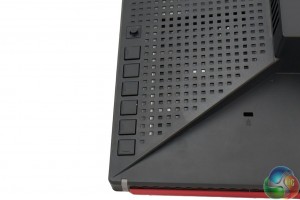
The menu interface is controlled from the right hand side of the panel (from front). The buttons are arranged in a little vertical row, with a navigation joystick included at the top.
 KitGuru KitGuru.net – Tech News | Hardware News | Hardware Reviews | IOS | Mobile | Gaming | Graphics Cards
KitGuru KitGuru.net – Tech News | Hardware News | Hardware Reviews | IOS | Mobile | Gaming | Graphics Cards



It’s actually only twice the pixel density of a 1080p monitor of the same size.
You’re wrong and here’s why…
32″ is the diagonal measurement so effectively, 27.89″ × 15.69″
= 437.6in² 16:9
1080p = 68.84 PPI
2160p = 137.68 PPI
But wait, that’s only double? Wrong, this is the misinterpretation of pixel
density. If we were strictly talking about a straight line, then yes this would
be correct. However, because we are using a 2d plane for our viewing pleasure
it is in reality like this.
1080p = 4739 PPI²
2160p = 18956 PPI²
That’s right, the pixel density is correctly 4x that of 1080p. =D
The styling looks similar to the ROG Swift, nice! 🙂
◔❧❧◔❧❧◔I RECEIVED FIRST DRAFT OF $13000!@ak6:
,
➨➨➨➨https://QuickerAdvicehina.biz/learner/kits….
2X lineal density
4X areal density
People misunderstand how crucial it is to calculate the correct pixel density and use the linear form since the numbers are smaller making them easier to pick up on. But, we don’t just view screen in a straight line. Also, they’re not equally the same PPI Vertically as they are Horizontally. They differ slightly, but not by much to write home about.
“Factory pre-calibrated, industry-leading color accuracy with 100% sRGB and Rec. 709 color space support.”
its NOT UHD-1 Rec. 2020 real color space compliant so why would any consumer care to spend any money here when UHD-1/UHD-2 have their “basic parameter set” is defined by the “ITU BT.2020 standard” 10bit/12bit real colourspace, and not the antiquated Rec. 709 pseudo color space.
https://tech.ebu.ch/docs/events/webinar049_BeyondHD-update/hoffmann_beyondHD_update.pdf
http://www.bbc.co.uk/rd/blog/2013/06/defining-the-future-of-television
Defining the Future of Television
Posted by Andrew Cotton on 19 June 2013
…For those who’re not familiar with UHDTV its basic parameter set is defined by the ITU BT.2020 standard. The standard defines two UHDTV profiles – what’s commonly called UHD-1 at 3840×2160 pixels and UHD-2 at 7680×4320 pixels. The UHD-2 format was used for last year’s joint NHK/BBC public demonstrations of Super Hi-Vision during the London 2012 Olympics…..
Correct or to put it more simply:
HD 1920 x 1080p = 2,073,600 pixels displayed
UHD 3840 x 2160 = 8,294,400 pixels displayed
UHD is exactly 4 times HD (4 x 2,073,600 = 8,294,400) pixels
Not one of your better reviews guys. There is little mention of the HDMI 2.0 input which is a first on a monitor. Does it support chroma 444 across all inputs at 60hz 4k etc. We need details.